
"Eve of Destruction" is a protest song written by P. F. Sloan in mid-1965. Several artists have recorded it, but the most popular recording was by Barry McGuire.
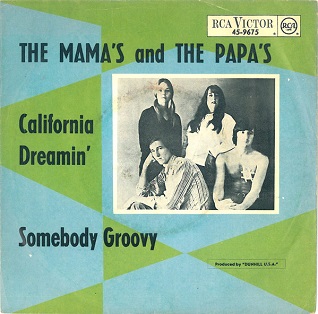
"California Dreamin'" is a song written by John Phillips and Michelle Phillips in 1963 and first recorded by Barry McGuire. The best-known version is by the Mamas & the Papas, who sang backup on the original version and released it as a single in December 1965. The lyrics express the narrator's longing for the warmth of Los Angeles during a cold winter in New York City. It is recorded in the key of C-sharp minor.
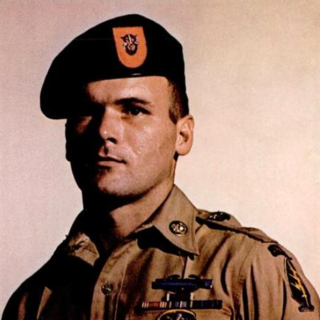
Barry Allen Sadler was an American soldier, singer-songwriter and author. Sadler served as a Green Beret medic, achieving the rank of Staff Sergeant. He served in the Vietnam War from late December 1964 to late May 1965. Most of his work has a military theme, and he is best known for his patriotic "Ballad of the Green Berets," a #1 hit in 1966. He died at age 49 after being shot in the head in Guatemala City.
This is a list of notable events in country music that took place in 1965.
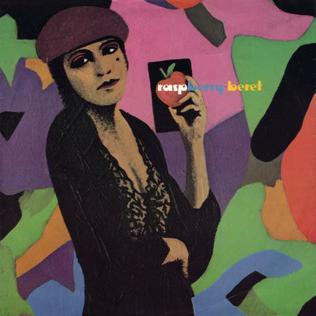
"Raspberry Beret" is a song written by American musician Prince and the lead single from Prince & the Revolution's 1985 album Around the World in a Day.

"Brandy", later called "Mandy", is a song written by Scott English and Richard Kerr. It was originally recorded by English in 1971 and reached the top 20 of the UK Singles Chart.
"I'm So Lonesome I Could Cry" is a song written and recorded by American country music singer-songwriter Hank Williams in 1949. The song has been covered by a wide range of musicians.
"Don't Know Much" is a song written by Barry Mann, Cynthia Weil and Tom Snow. Mann was the first to record the song in 1980, gaining a minor chart hit in the US. The song was made famous when it was covered as a duet by Linda Ronstadt and Aaron Neville in 1989. Their version was a worldwide success, topping the Irish Singles Chart and reaching the top 10 in several territories.

"The Battle of New Orleans" is a song written by Jimmy Driftwood. The song describes the Battle of New Orleans from the perspective of an American soldier; the song tells the tale of the battle with a light tone and provides a rather comical version of what actually happened at the battle. It has been recorded by many artists, but the singer most often associated with this song is Johnny Horton. His version scored number 1 on the Billboard Hot 100 in 1959. Billboard ranked it as the No. 1 song for 1959, it was very popular with teenagers in the late 1950s/early 1960s in an era mostly dominated by rock and roll music.

"Let It Be Me" is a popular song originally published in French in 1955 as "Je t'appartiens" interpreted by Gilbert Bécaud. It became popular worldwide with an English version by the Everly Brothers and later with the duet by Betty Everett and Jerry Butler.

"19th Nervous Breakdown" is a song recorded by the English rock band the Rolling Stones. Written by Mick Jagger and Keith Richards, it was recorded in late 1965 and released as a single in February 1966. It reached number 2 on both the US Billboard Hot 100 and Britain's Record Retailer chart, while topping the charts compiled by Cash Box and NME. In the UK, it broke the band's streak of consecutive number-one singles that had started with "It's All Over Now" (1964).
"With a Child's Heart" is a song by the singer Stevie Wonder, from his album Up-Tight. The song was released as the b-side to the single "Nothing's Too Good for My Baby".
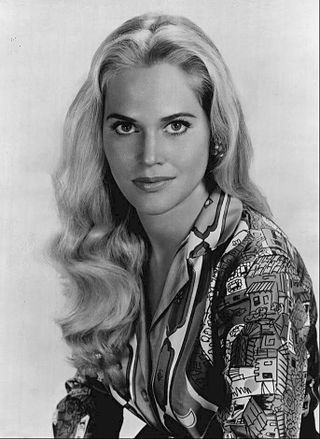
Nancy Ames is an American folk singer and songwriter. She regularly appeared on the American version of the television series That Was the Week That Was. The TW3 Girl, as she was known, sang the show theme and special material.

Members of the U.S. Army Special Forces will emphatically assert that the "Green Beret" is a hat and not the man who wears it. Nevertheless, for a time in the 1960s the Green Berets and the men who wore them became a national fad emerging in a wide variety of popular culture referents. After a decline in popularity during the 1970s — coinciding with the American public's backlash against the Vietnam War — the Green Berets gripped the popular imagination again beginning with the Rambo film franchise in 1982. They continue to appear as both major and minor referents in popular culture — especially in movies and television — often serving as a shorthand signifier for a shady or covert military background for a fictional character. As a dramatic device, this can cut both ways — i.e., lead an audience to either admire or fear a character.
Sid Bass was an American arranger, composer, conductor and songwriter who was most successful in the 1960s.
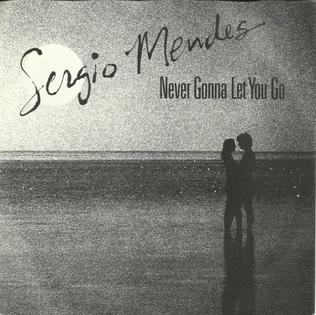
"Never Gonna Let You Go" is a popular song from 1982 written by the husband-and-wife songwriting team of Cynthia Weil and Barry Mann; Weil wrote the lyrics, while Mann wrote the music. It was first recorded by Dionne Warwick for her 1982 album Friends in Love, and then by singer Stevie Woods for his 1982 album The Woman in My Life. However, its best-known rendition was by Brazilian musician and bandleader Sérgio Mendes, on his 1983 self-titled album. That version was sung by Joe Pizzulo and Leeza Miller.
Billboard Top Pop Hits is a series of compilation albums released by Rhino Records in 1994 and 1995, each featuring ten recordings from the easy listening charts from a specific year in the 1960s. Ten albums in the series were released, one each for the years from 1960 to 1969.
"Funny How Time Slips Away" is a song written by Willie Nelson and first recorded by country singer Billy Walker. Walker's version was issued as a single by Columbia Records in June 1961 and peaked at number 23 on the Hot C&W Sides chart. The song has been featured in several live action films and television shows, such as in the first episode of the second season of AMC’s Better Call Saul and in the 2020 Netflix drama The Devil All the Time.
"The "A" Team" is a 1966 song and charting single by Staff Sergeant Barry Sadler. It was Sadler's second and final American patriotic hit song at the time of the Vietnam War, following the success of "The Ballad of the Green Berets".











